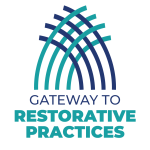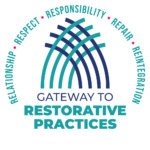
It feels a little strange to write a reflection about recent events, but it will finish the reflections for the 2022-2023 school year. In December I learned that we would be training the District’s newly hired behavior analysts in January. This kept me busy developing tier 3 strategies for them.
Also, in January I was able to lead a content circle for teachers at one of my school sites. Providing experiences in circles often fosters interest in circles and some become interested in doing circles with their students. In this case, I worked with two teachers on using community building circles.
My colleagues and I did a weekly workshop for five weeks for a school site. I did three of the five workshops. It is fun to get-to-know learners over time and connect their learning from workshop to workshop. It was during this time I found myself asking, why don’t I have circles as part of every Restorative Practices workshop I developed? I’m slowly integrating them into the 25+ workshops.
In March I attended a workshop with San Diego County Office of Ed called Restorative Leadership: Healing Our School Communities. My colleagues and I work with 34 school sites K-12. Having spent a decade training site teams and working with administrators who are Restorative Practices site team leaders, I’m very interested in RP leadership & sustainability. I appreciated the definition of restorative leaders and why they’re necessary. The table with oppressive leadership and restorative leadership provided key points for each. The restorative (servant) leadership fits both my professional and personal beliefs. We had several times to interact and learn from others. I’m so thankful for Mr. Ceja’s leadership. He leads SDCOE restorative practices program.
I’m looking forward to sharing the insights I gained with the administrators I work alongside. We are also modifying their acknowledgement of ancestors and community agreements for our RP 101 seminars during our summer planning.
In April I attended another San Diego County Office of Ed called Restorative Justice Practices Site Implementation and Sustainability. We began by looking at building a foundation of building trust and respect with staff and students. They recommended both holding staff and department meetings in circles and ensuring that staff have access to regular check-ins and become accustomed to using circles. From the feedback we received from site leads last fall, it appears that none of the schools I work with are practicing this, but I’ll continue pursuing this option with them.
We considered staff feeling overwhelmed with school initiatives as well as implementation science and continuous Improvement. Sites reach what’s considered full Implementation when at least 50% of the site’s educators are committed and implementing restorative practices and showing outcome improvements. They recommended using a site team for implementation which is how the training cohorts were originally set up. One of this fall’s update questions focuses on determining what implementation level each site is.
There’s more to share so I’ll post a second part to this blog post.
Image Source: pink-flower-tree-and-green-grass [freerangestock.com]

